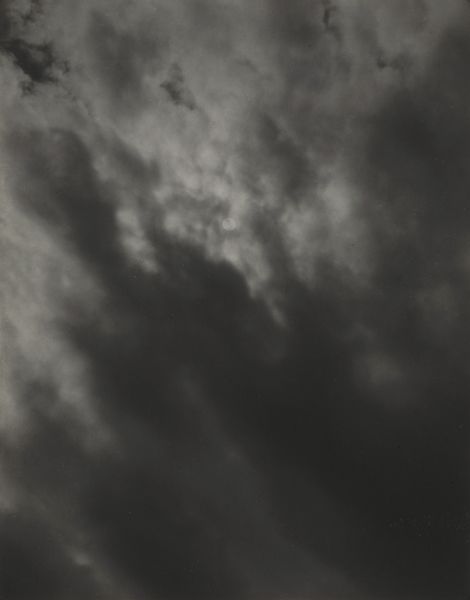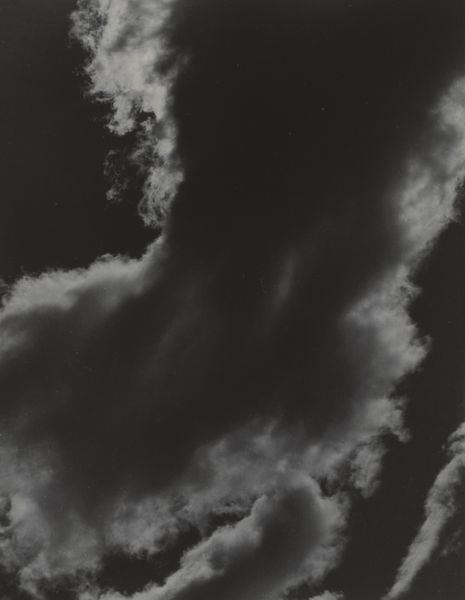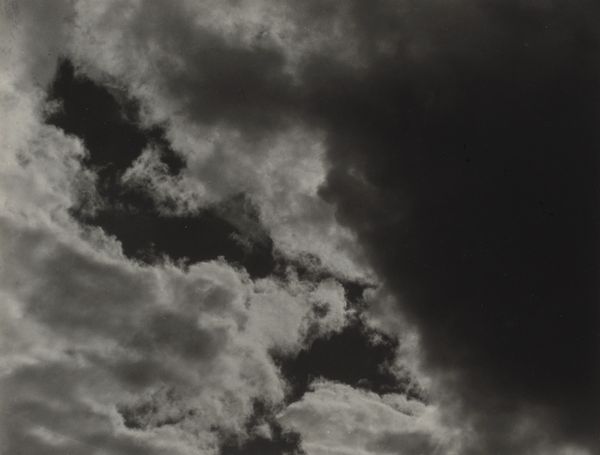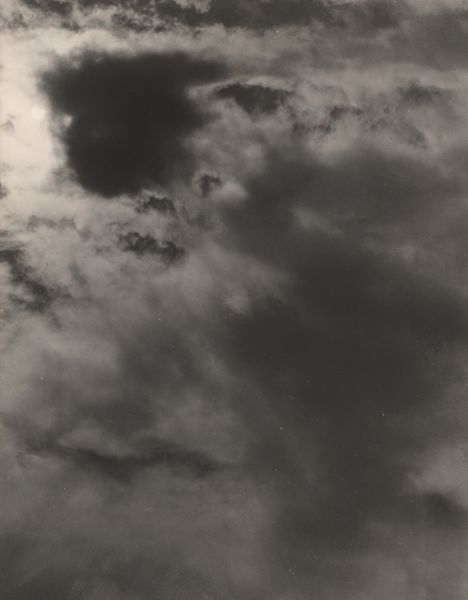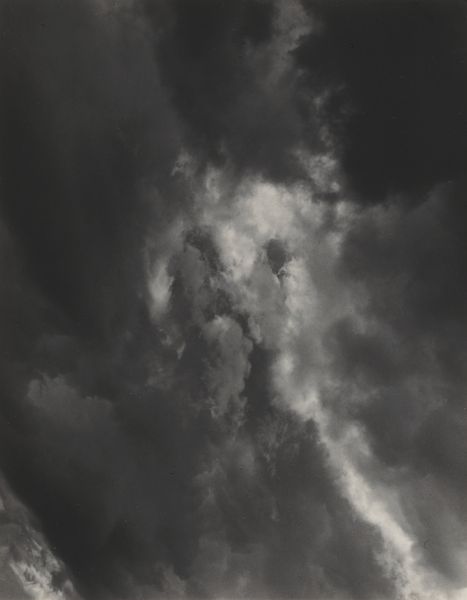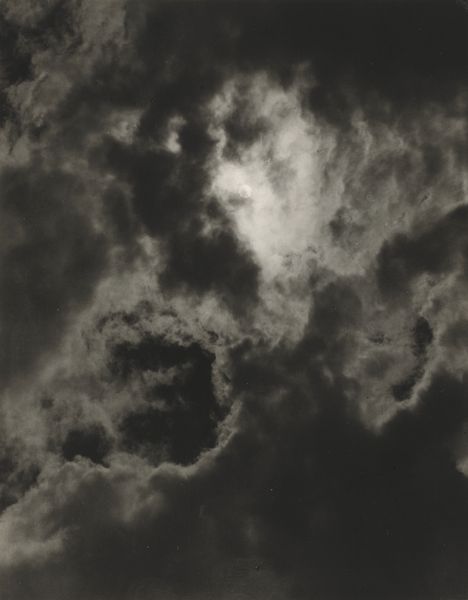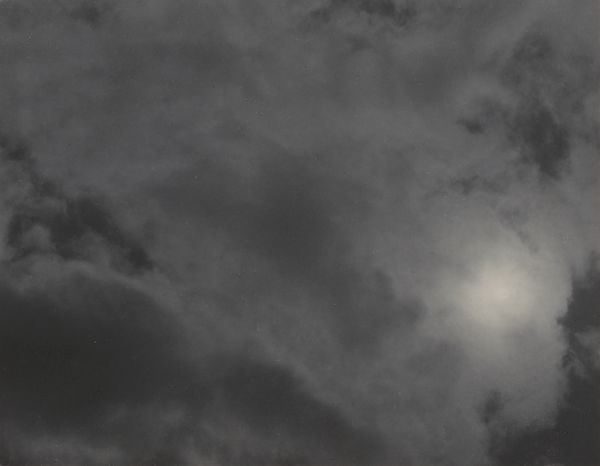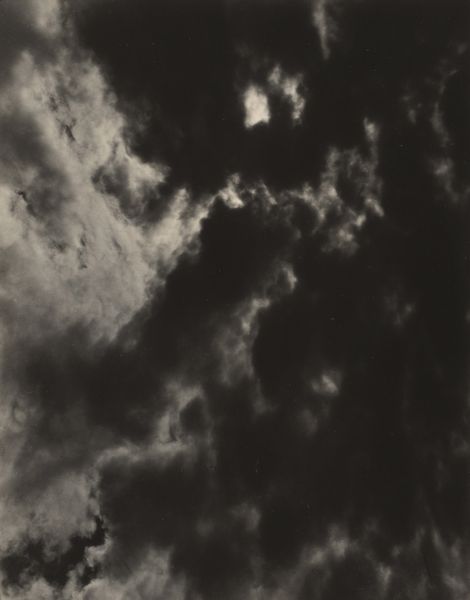
Dimensions: sheet (trimmed to image): 9.1 × 11.7 cm (3 9/16 × 4 5/8 in.) mount: 34.1 x 27.2 cm (13 7/16 x 10 11/16 in.)
Copyright: National Gallery of Art: CC0 1.0
Curator: Right, let’s dive into Alfred Stieglitz’s series of photographs, specifically this gelatin-silver print created between 1923 and 1929 that he titled either Songs of the Sky or Equivalent. Editor: Wow, immediately I’m struck by how ominous this feels. It’s pure drama, almost oppressive in its darkness. Are these storm clouds brewing? The tonality is incredible—a real study in black and white. Curator: Well, the "Equivalents" were Stieglitz's way of externalizing his internal emotional landscape. He saw these photographs as mirroring his feelings and thoughts, using clouds as symbols, pure abstraction taken from nature itself. Editor: So the clouds are, in effect, stand-ins? It's fascinating how Stieglitz detaches the subject—the sky—from its literal meaning to represent inner turmoil, reflecting a period rife with socio-political upheaval and a questioning of traditional values. I mean, think of the Weimar Republic, the rise of fascism… Did he see the dark clouds on the horizon for society, too? Curator: That's a reading that resonates. Stieglitz was deeply engaged with the modernist project. His move toward abstraction was part of a larger trend. Also, think of photography itself becoming unbound—moving beyond mere representation. He wanted photography to be seen as high art, you know? Editor: Absolutely! And this transcends documentation. It's emotional expression through form and light, challenging the notion of photography as purely objective. This piece asks us to find ourselves, our own anxieties and hopes, within the abstract swirls. It's like visual poetry. The interplay of light and dark, almost fighting on the picture plane—it echoes so many of the conflicts of the era, and frankly, of our own. Curator: Exactly! And it’s the sheer ambiguity, the interpretive openness of these cloudscapes, that gives them their lasting power. No single story, but infinite echoes. Editor: Absolutely, and that is also what speaks to me. It’s less about what Stieglitz felt, than about what this conversation makes me consider, my own state of affairs! I find myself staring into a mirror, or perhaps staring at the possibility of change. Thanks for pointing out Stieglitz’s cloudscapes, here's to clearing weather, whatever that might bring.
Comments
No comments
Be the first to comment and join the conversation on the ultimate creative platform.
